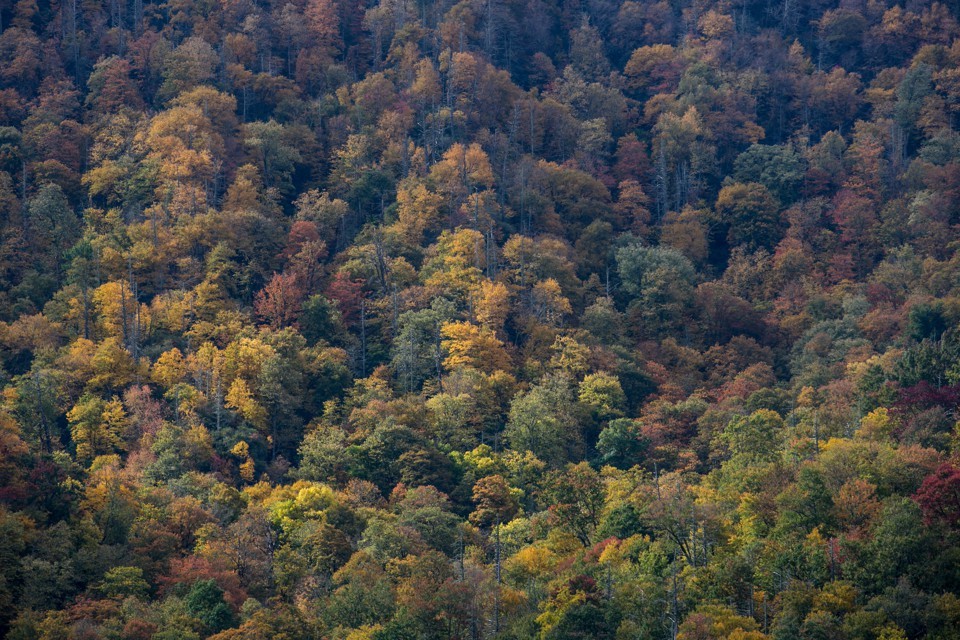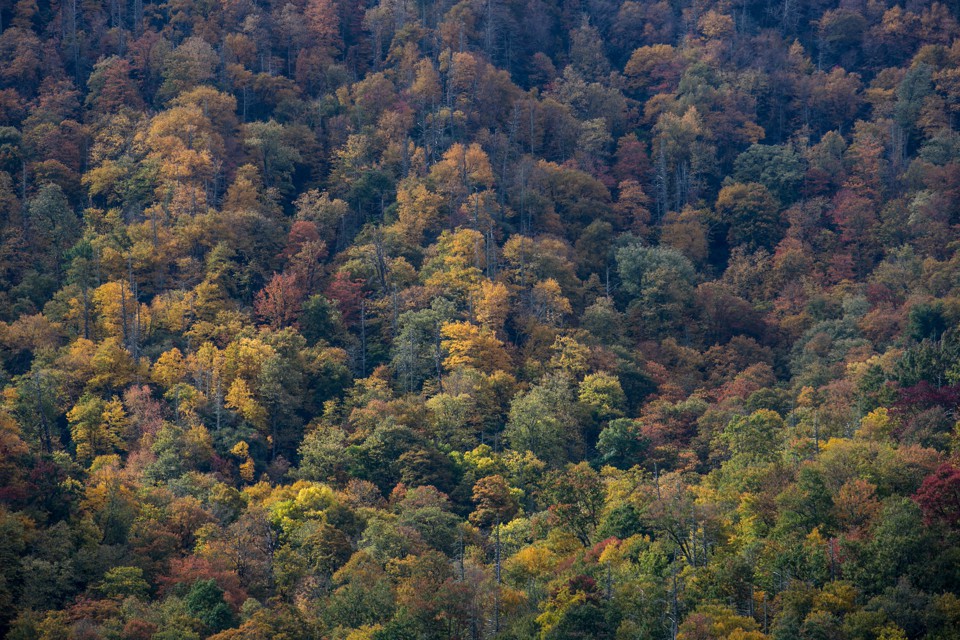
American Trees Are Moving West, and No One Knows Why
Climate change only explains at least 20 percent of the movement.

About three-quarters of tree species common to eastern American forests—including white oaks, sugar maples, and American hollies—have shifted their population center west since 1980. More than half of the species studied also moved northward during the same period.
These results, among the first to use empirical data to look at how climate change is shaping eastern forests, were published in Science Advances on Wednesday.
The results are fascinating in part because they don’t immediately make sense. But the team has a hypothesis: While climate change has elevated temperatures across the eastern United States, it has significantly altered rainfall totals. The northeast has gotten a little more rain since 1980 than it did during the proceeding century, while the southeast has gotten much less rain. The Great Plains, especially in Oklahoma and Kansas, get much more than historically normal.
“Different species are responding to climate change differently. Most of the broad-leaf species—deciduous trees—are following moisture moving westward. The evergreen trees—the needle species—are primarily moving northward,” said Songlin Fei, a professor of forestry at Purdue University and one of the authors of the study.
There are a patchwork of other forces which could cause tree populations to shift west, though. Changes in land use, wildfire frequency, and the arrival of pests and blights could be shifting the population. So might the success of conservation efforts. But Fei and his colleagues argue that at least 20 percent of the change in population area is driven by changes in precipitation, which are heavily influenced by human-caused climate change.

“This is a very cool study, with results that seem to raise more questions than they can provide answers for,” said Loïc D’Orangeville, an ecologist at the Quebec Forest Research Center who was not connected to the study, in an email. “West is usually drier in the study region, so although it’s been wetter in the recent decades, it’s still drier than the East.”
The movement of conifers and other needle trees north makes much more sense. Conifers are already more vulnerable to temperature than flowering, deciduous trees. They also already populate the boreal forest of eastern North America, so they’re well-adapted to the colder, drier conditions they will find as they expand north in the United States.
Fei and his colleagues don’t know if the westward trend will continue. We may have already seen the peak of westward movement, and northward expansion may soon outrank it. “When the result came out that trees are moving westward, our eyeballs opened wide. Like, ‘Wow, what’s going on with this?’ The results seem to show that moisture plays a much more significant role in the near-term, which is very intriguing,” he told me.
The survey draws on the U.S. Forest Service’s Forest Inventory and Analysis Program, a kind of continuously running census of the country’s tree population. The program, which stepped up in 1978 but which has been conducted in some form since the 1930s, surveys the health, density, and species mix of forested areas across the country. It examines not only the majestic, landmark tracts of untrammeled forest (like George Washington National Forest) but the humbler woods, as well: stands of trees near the highway, at the edge of housing developments, and in the middle of city parks.
What concerns the team is that—if deciduous trees are moving westward while conifers move northward—important ecological communities of forests could start to break up in the east. Forests are defined as much by the mix of species, and the interaction between them, as by the simple presence of a lot of trees. If different species migrate in different directions, then communities could start to collapse.
“If you have a group of friends, and people move away to different places—some go to college in different places, and some move to Florida—the group is … probably going to fall apart,” Fei said. “We’re interested in whether this tree community is falling apart.”
“These results show contemporary proof of something we know has happened before and will happen again: that trees are highly dynamic organisms, constantly moving in response to climatic shifts like recent glaciations or other disturbances. Their actual range does not reflect conditions that are optimal for their growth,” said D’Orangeville.
Any tree’s range represents “a legacy of historical migrations and battles lost against other species or disturbances. With climate change however, their capacity to keep pace with the fast-changing climate is a major issue.”
